This pub comprises two former ‘listed’ barns. The larger barn originally stood next to Water End House, by a ford over the River Lea, in the Parish of Sandridge. Water End House and Barn were probably built around 1610, by Sir John Jennings. In 1938, Water End Barn was dismantled and re-erected in the middle of St Albans, serving as Waterend Barn Restaurant. A few years later, it was enlarged by a smaller barn from Little Hormead.
A plaque detailing the history of the pub’s building.
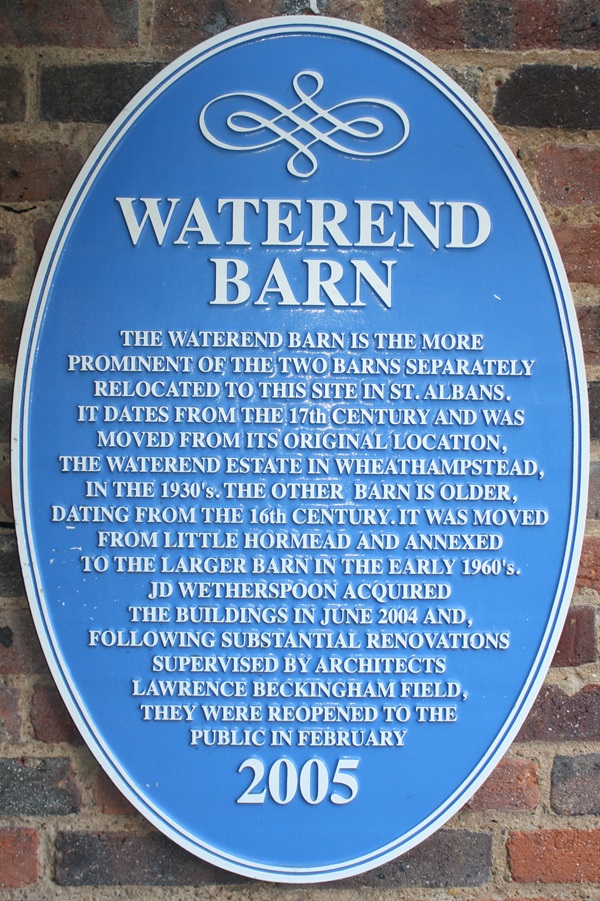
The text reads: The Waterend Barn is the more prominent of the two barns separately relocated to this site in St Albans. It dates from the 17th Century and was moved from its original location, The Waterend Estate in Wheathampstead, in the 1930’s. The other barn is older, dating from the 16th Century. It was moved from Little Hormead and annexed to the larger barn in the early 1960’s. JD Wetherspoon acquired buildings in June 2004 and, following substantial renovations supervised by architects Lawrence Beckingham Field, they were reopened to the public in February 2005.
A stone plaque detailing the history of Waterend Barn.
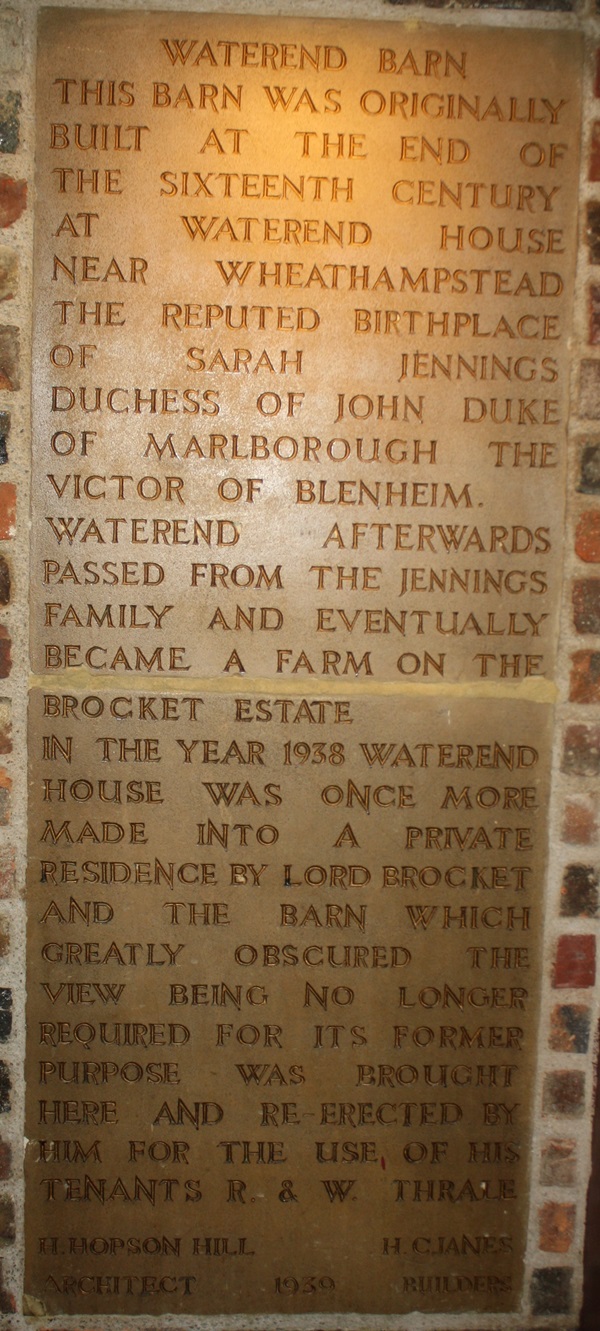
The text reads: This barn was originally built at the end of the sixteenth century at Waterend House near Wheathampstead, the reputed birthplace of Sarah Jennings Duchess of John Duke of Marlborough the Victor of Blenheim. Waterend afterwards passed from the Jennings family and eventually became a farm on the Brocket Estate. In the year 1938 Waterend House was once more made into a private residence by Lord Brocket, and the barn which greatly obscured the view being no longer required for its former purpose, was brought here and re-erected by him for the use of his tenants R. & W. Thrale.
H. Hopson Hill Architect
H. C. Janes Builders
1939
Framed drawings and text about Waterend Barn.
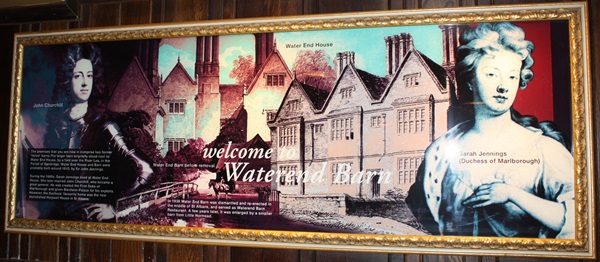
The text reads: The premises that you are now in comprise two former ‘listed’ barns. The larger barn originally stood next to Water End House, by a ford over the River Lea, in the Parish of Sandbridge. Water End House and Barn were probably built around 1610, by Sir John Jennings.
During the 1660s, Sarah Jennings lived at Water End House. She later married John Churchill, who became a general. He was created the First Duke of Marlborough and given Blenheim Palace for his exploits. However, the Duchess’ favourite home was the now demolished Holywell House in St Albans.
Left: John Churchill
Centre left: Water End Barn before removal
Centre right: Water End House
Right: Sarah Jennings (Duchess of Marlborough)
Framed photographs and text about St Peter’s Street.
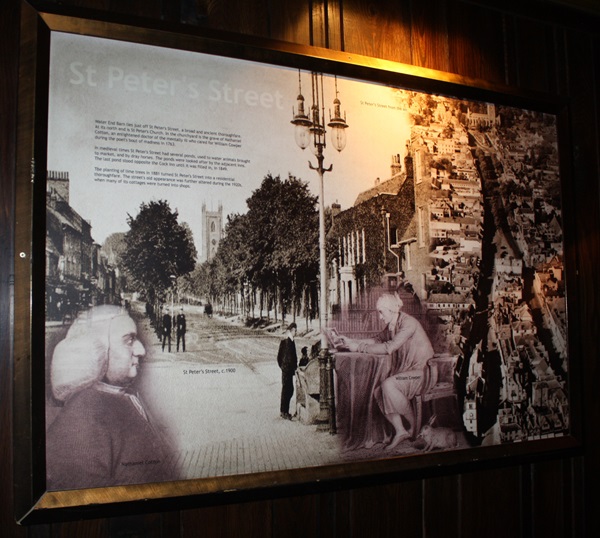
The text reads: Water End Barn lies just off St Peter’s Street, a broad and ancient thoroughfare. At its north end is St Peter’s Church. In the churchyard is the grave of Nathaniel Cotton, an enlightened doctor of the mentally ill who cared for William Cowper during the poet’s bout of madness in 1763.
In medieval times St Peter’s Street had several ponds, used to water animals brought to market, and by dray horses. The ponds were looked after by the adjacent inns. The last pond stood opposite the Cock Inn until it was filled in, in 1849.
The planting of lime trees in 1881 turned St Peter’s Street into a residential thoroughfare. The street’s old appearance was further altered during the 1920s, when many of its cottages were turned into shops.
Bottom left: Nathaniel Cotton
Above: St Peter’s Street, c1900
Centre: William Cowper
Right: St Peter’s Street from the air
Framed photographs and text about Arthur Melbourne-Cooper.
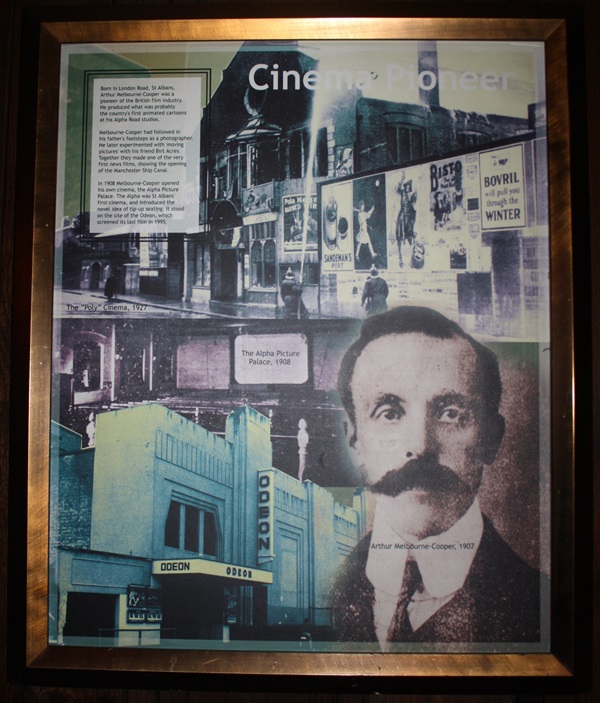
The text reads: Born in London Road, St Albans, Arthur Melbourn- Cooper was a pioneer of the British film industry. He produced what was probably the country’s first animated cartoons at his Alpha Road studios.
Melbourne- Cooper had followed in his father’s footsteps as a photographer. He later experimented with ‘moving pictures’ with his friend Birt Acres. Together they made one of the very first news films, showing the opening of the Manchester Ship Canal.
In 1908 Melbourne- Cooper opened his own cinema, the Alpha Picture Palace. The Alpha was St Albans first cinema, and introduced the novel idea of tip- up seating. It stood on the site of the Odeon, which screen its last film in 1995.
Top: The “Poly” Cinema, 1927
Centre: The Alpha Picture Palace, 1908
Bottom: Arthur Melbourne- Cooper, 1907
A piece of text about The Blenheim Room.
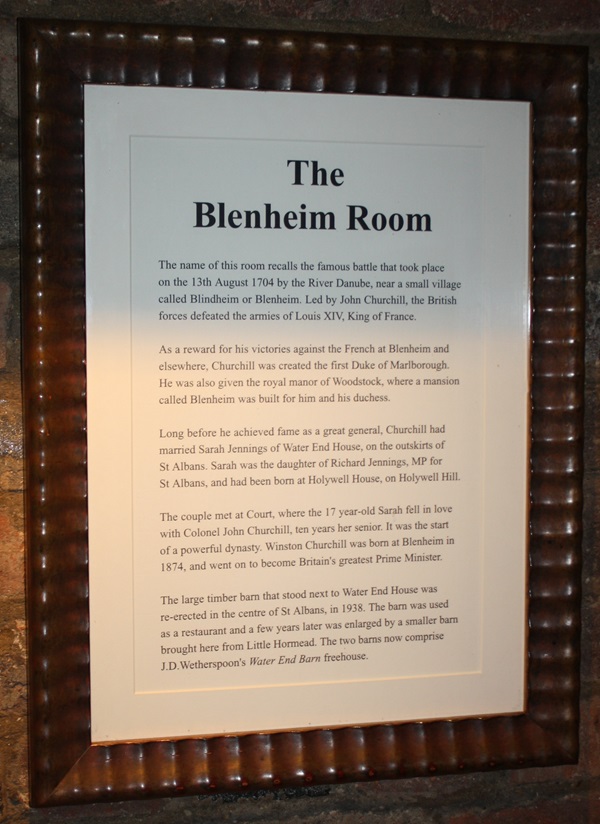
The text reads: The name of this room recalls the famous battle that took place on the 13th August 1704 by the River Danube, near a small village called Blindheim or Blenheim. Led by John Churchill, the British forces defeated the armies of Louis XIV, king of France.
As a reward for his victories against the French at Blenheim and elsewhere, Churchill was created the first Duke of Marlborough. He was also given the royal manor of Woodstock, where a mansion called Blenheim was built for him and his duchess.
Long before he achieved fame as a great general, Churchill had married Sarah Jennings of Water End House, on the outskirts of St Albans. Sarah was the daughter of Richard Jennings, MP for St Albans, and had been born at Holywell House, on Holywell Hill.
The couple met at Court, where the 17 year-old Sarah feel in love with Colonel John Churchill, ten years her senior. It was the start of a powerful dynasty. Winston Churchill was born at Blenheim in 1874, and went on to become Britain’s greatest Prime Minister.
The large timber barn that stood next to Water End House was re-erected in the centre of St Albans, in 1938. The barn was used as a restaurant and a few years later was enlarged by a smaller barn brought here from Little Hormead. The two barns now compromise J.D.Wetherspoon’s Water End Barn freehouse.
A framed drawing of Sarah Jennings, Duchess of Marlborough.
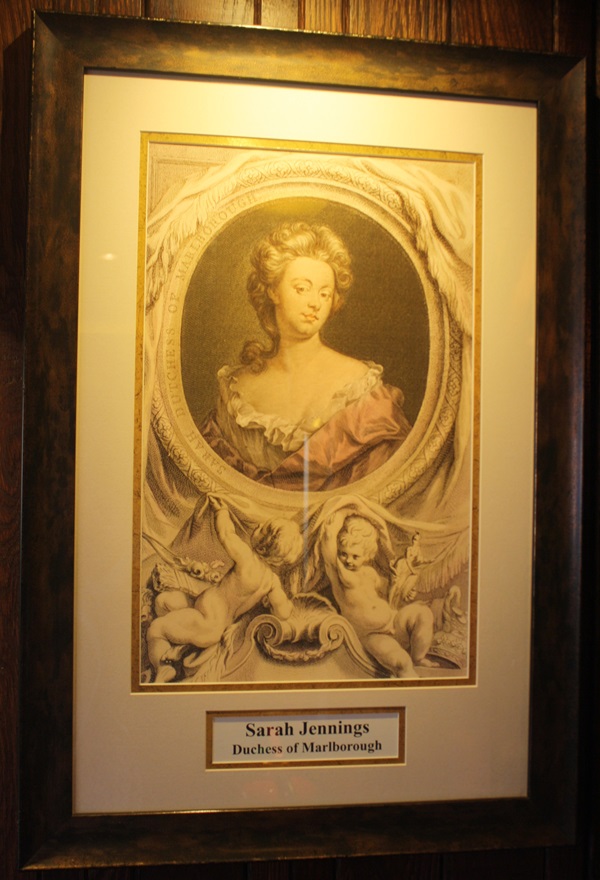
A framed drawing of Blenheim House.
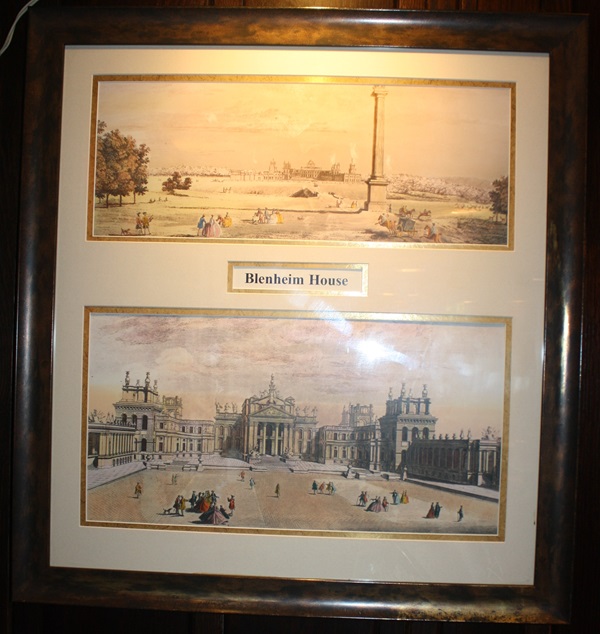
Wooden pieces of art inspired by The battle of Blenheim.
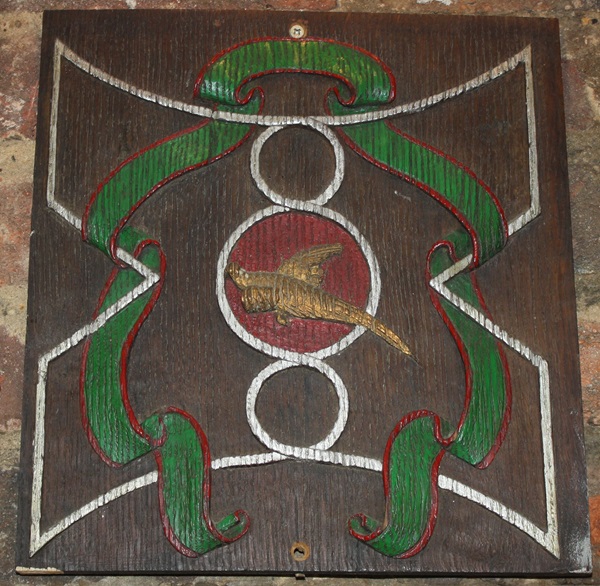
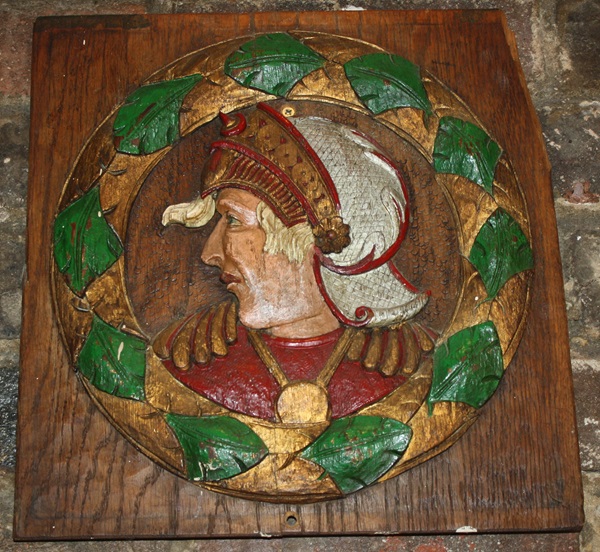
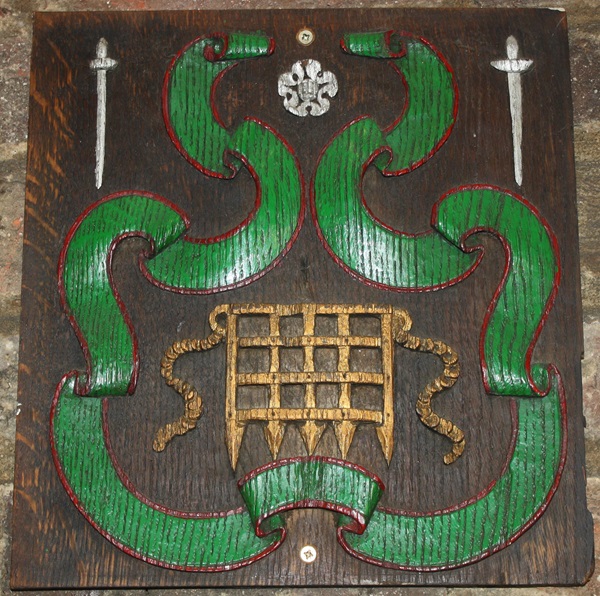
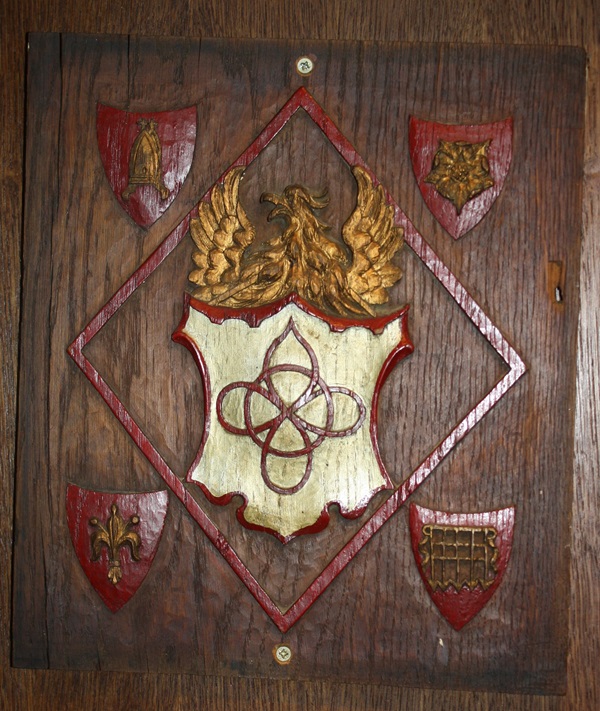
Internal photo of the main barn.
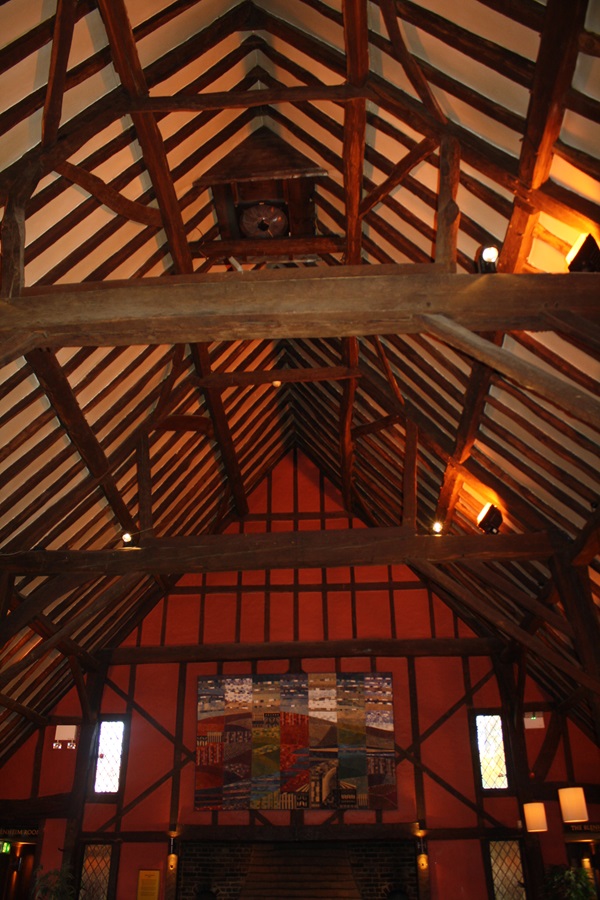
Internal photo of the main barn.
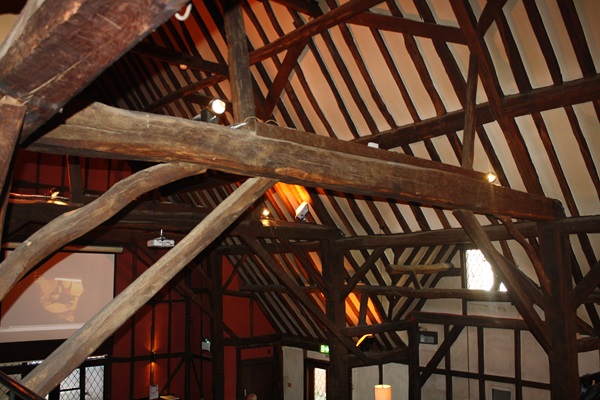
A unique bench inspired by church pews used in St Albans Abbey.
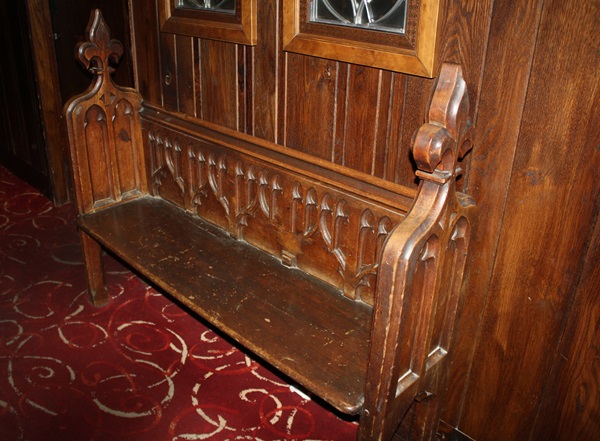
Modern textile art, entitled ‘Skyline, St Albans’ 2005, by Barbara Weeks.
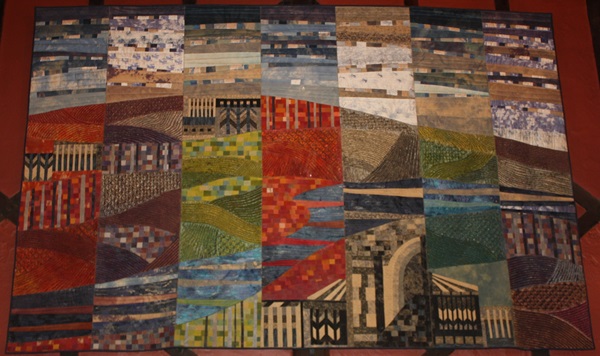
This specially commissioned textile, by Barbara Weeks, depicts the changing seasons around St Albans, with impressions of the Abbey, the Roman Verulamium Museum and Kingsbury Water Mill. The river Ver weaves its way through. The work draws on the traditions of ‘Strippy Quilts’, as well as using modern patchwork, mixed with cut raw edges of cloth.
Barbara Weeks has lived near Kimpton since 1985. She teaches and exhibits throughout the UK and abroad. She has featured in many publications on contemporary textile art. Locally, she participates in the Herts Visual Arts Forum Open Studios.
Barbara’s work involves batiked, painted and dyed textiles. With these materials she pursues her interest in revealing surface textures and incorporating decorative motifs, resulting in works that take a contemporary look at age- old imagery and ideas.
A modern painting, entitled Tryptych 1, by Anneli Boon.
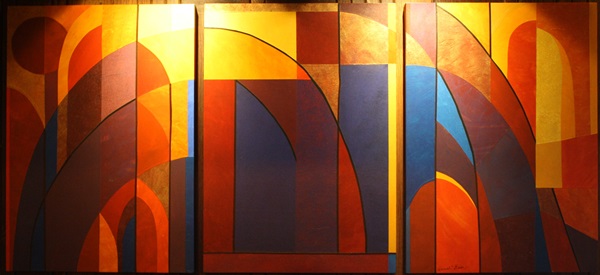
This set of work was inspired by the ancient Abbey Church of St Albans with its architectural structures of arches and columns, and its richly decorative stained glass.
A modern painting, entitled Tryptych 2, by Anneli Boon.
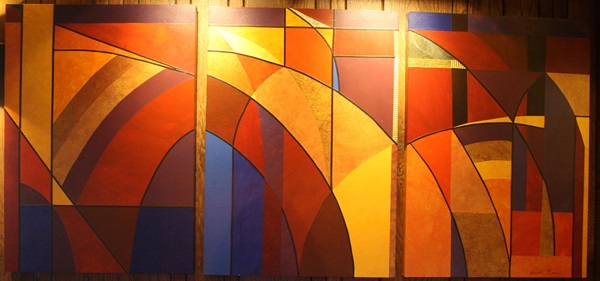
This set of work was inspired by the ancient Abbey Church of St Albans with its architectural structures of arches and columns, and its richly decorative stained glass.
An outside board for the pub with an illustration of the barn.
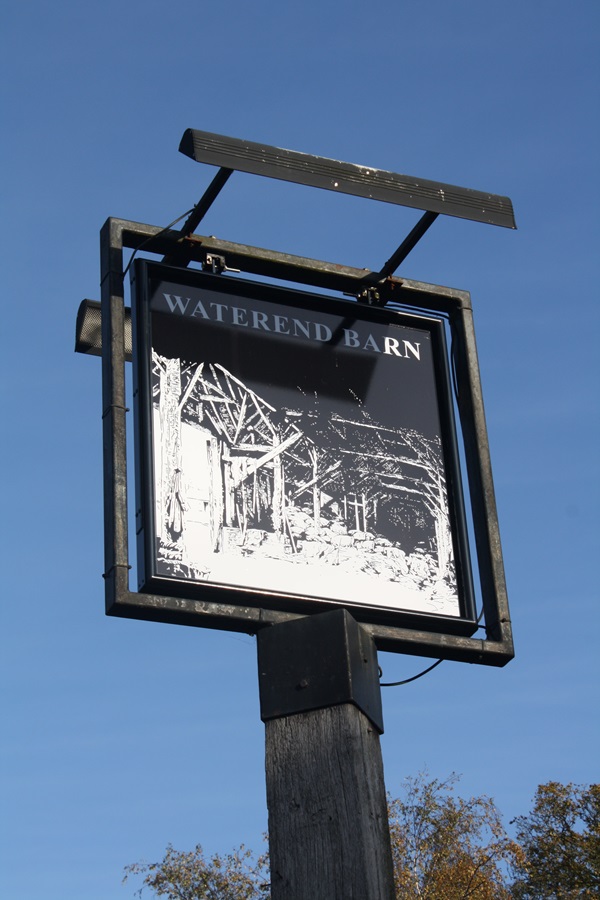
External photo of the building – front.
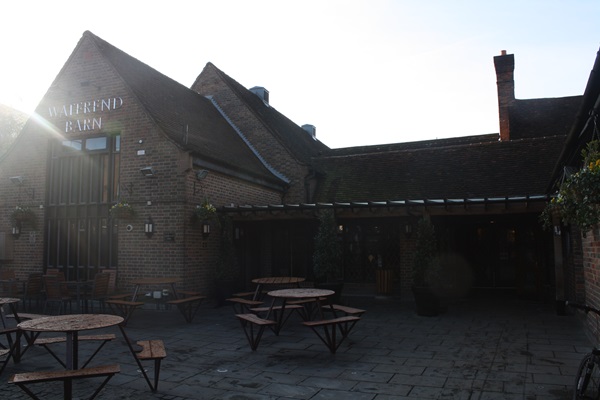
External photo of the building – front.
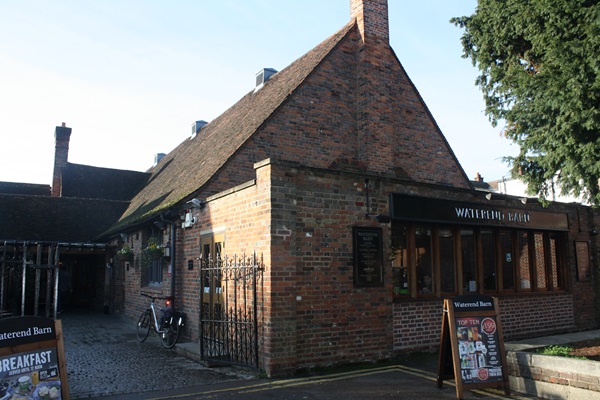
Photographs provided by shift leader Rachel Bithell, who's working on her own history project for the pub:
A photograph from a 1953 staff dinner dance in the main barn.
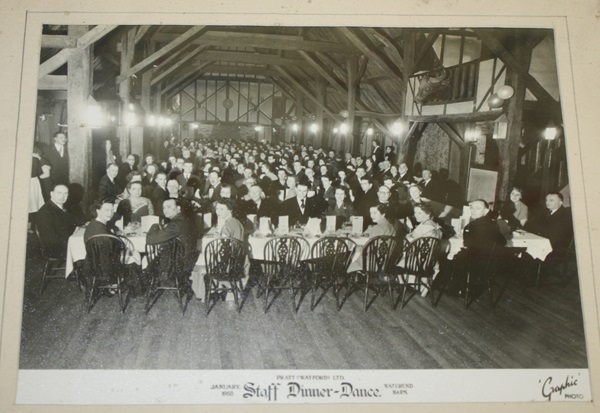
The dinner dance, for the staff of Pratt Watford Ltd, took place in January 1953.
The main barn was well known for its dinner dances in the past.
A photograph of a dinner dance in the main barn.
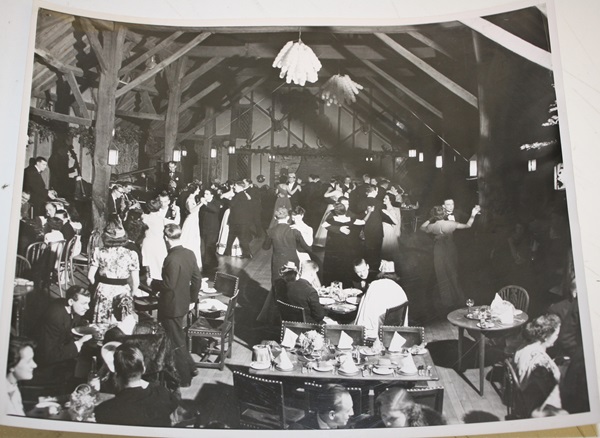
A photograph of Waterend Barn, when it opened as a restaurant.
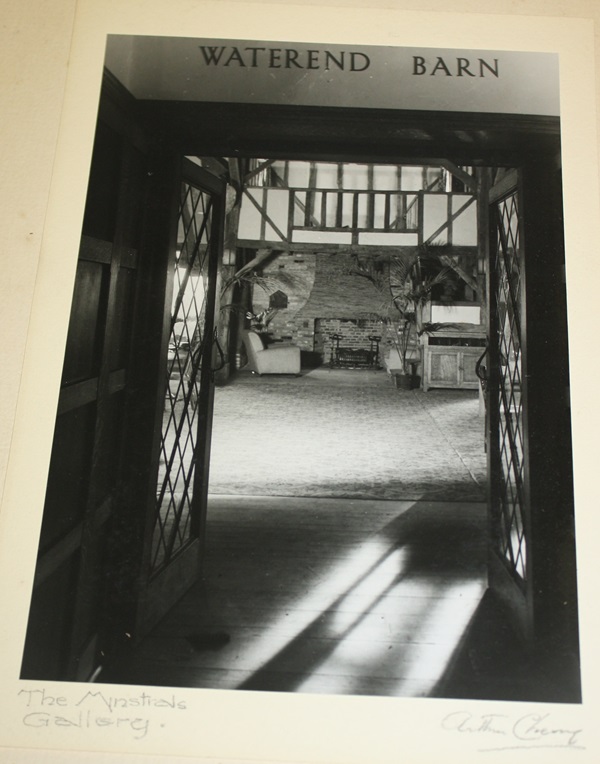
A photograph of the smaller barn, when it opened as a restaurant.
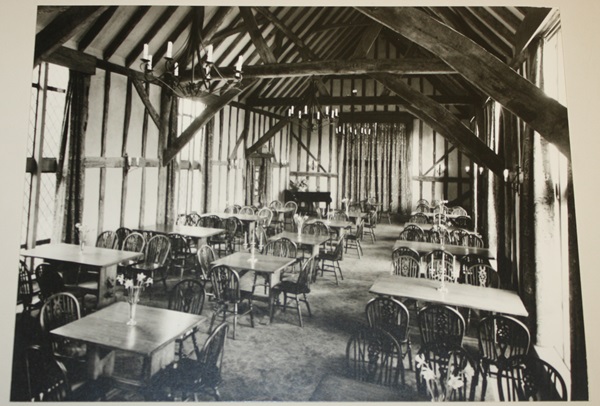
An original menu taken from when Waterend Barn Restaurant opened.
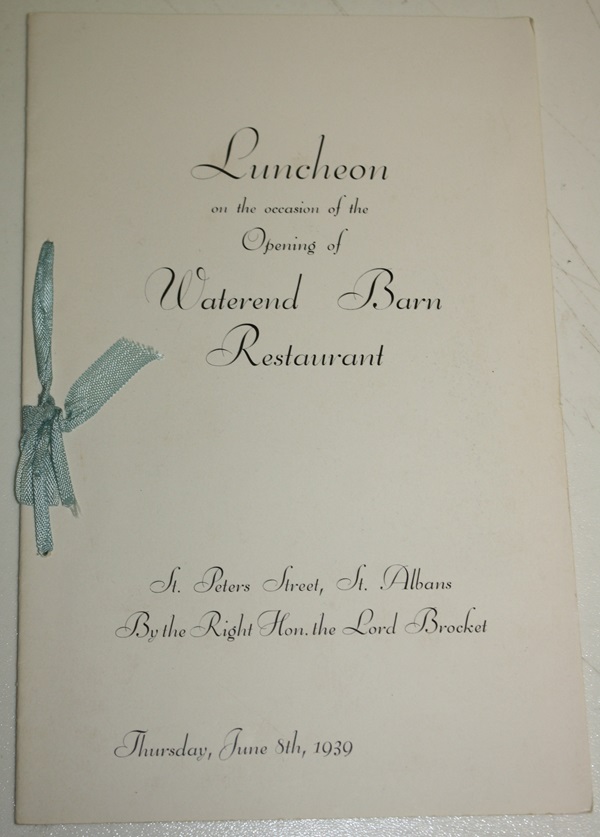
The menu reads: Luncheon on the occasion of the opening of Waterend Barn Restaurant
St. Peter’s Street, St. Albans
By the Right Hon. The Lord Brocket
Thursday, June 8th, 1939
A photograph of how Waterend Barn used to look.
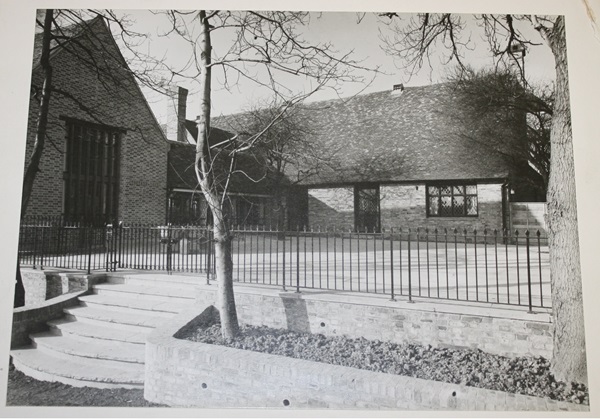
If you have information on the history of this pub, then we’d like you to share it with us. Please e-mail all information to: pubhistories@jdwetherspoon.co.uk